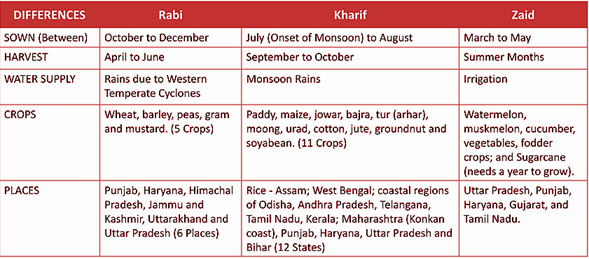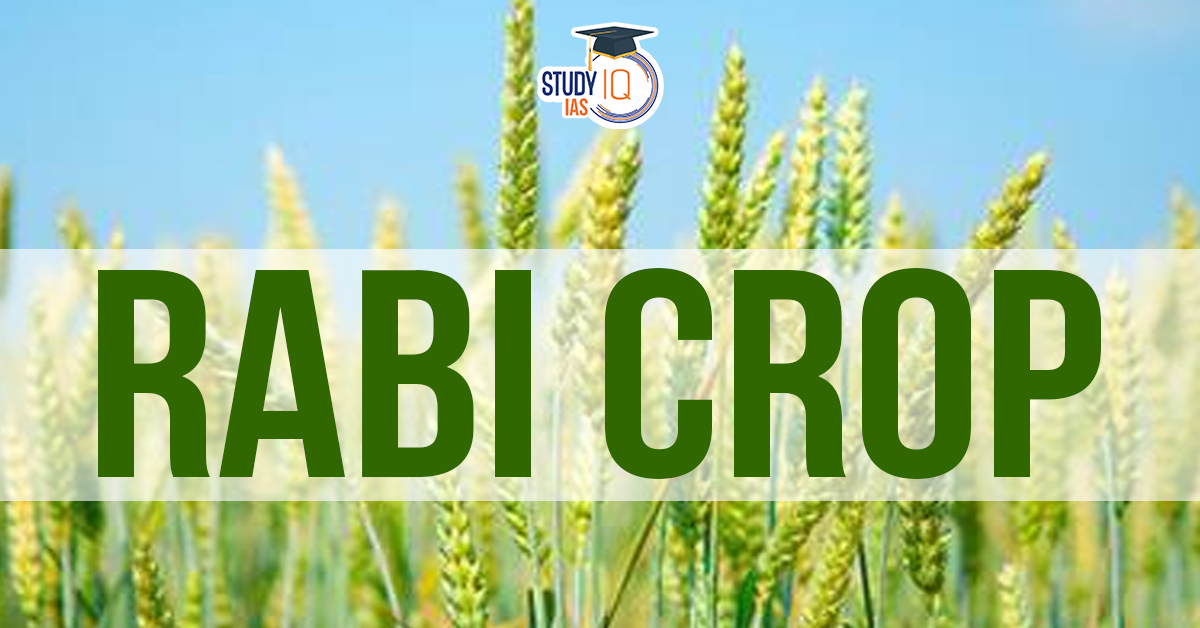Table of Contents
High October temperatures and shortages of di-ammonium phosphate (DAP) fertilizer have significantly impacted the planting of rabi (winter-spring) season crops in India. However, conditions improved after mid-November, leading to a recovery in sowing activities.
Cropping Seasons in India

Overview of Rabi Crop Planting
- Initial Delays: High temperatures in October resulted in a slow start for the sowing of wheat, mustard, chana (chickpea), masoor (red lentil), and other rabi crops.
- Farmers had sown only 41.30 lakh hectares (lh) of wheat by November 8, down from 48.87 lh the previous year.
- Similar declines were noted for mustard (50.73 to 49.90 lh) and chana (27.42 to 24.57 lh).
- Temperature Data: In October 2023, average maximum, minimum, and mean temperatures were 0.68°C, 1.78°C, and 1.23°C above normal, respectively.
- Average minimum temperatures were the highest since 1901 in several regions of India.
- Delayed Sowing: The typical planting window for rabi crops extends from October to mid-November, but farmers in Uttar Pradesh began sowing only around October 20-22 due to the heat.
Factors Affecting Crop Growth
- Soil Moisture and Water Availability: Surplus monsoon rains have significantly improved water levels in major reservoirs, reaching 86.7% of full capacity as of November 1, compared to 70.5% last year.
- This water availability encourages farmers to plant aggressively.
- Impact of La Niña: The developing La Niña phenomenon is expected to bring cooler-than-normal winters and increased rainfall, which could further support crop growth and mitigate late sowing impacts.
- Fertilizer Shortages: DAP shortages have been a significant issue; it contains 46% phosphorus, essential for early root development.
- Farmers faced long queues for DAP and resorted to alternative fertilizers with lower phosphorus content.
- Sales and opening stocks of DAP were lower than the previous year.
| Recovery in Sowing |
|
Food Inflation and Key Commodities
- High Food Inflation in October: Food inflation hit 10.9% year-on-year; vegetables saw a staggering 42.2% increase.
- Easing Prices for Vegetables: Winter vegetables like tomatoes, carrots, and spinach are arriving in markets, leading to reduced prices.
- Eg., Onion prices at Lasalgaon market (Maharashtra’s largest onion market) fell from ₹5,500/quintal to ₹3,700/quintal in late November.
- Concerns for Wheat and Edible Oils:
- Wheat: Government wheat stocks stood at 64 lakh tonnes (lt) as of November 1, 2024.
- With an average monthly depletion of 25-30 lt, opening stocks in April 2025 are projected to be 72-98 lt – barely meeting the normative minimum requirement of 74.6 lt.
- Uncertainty over the upcoming rabi wheat crop size may prompt the government to reduce the current 40% import duty to ensure supply and control prices.
- Edible Oils: Rising global prices due to Indonesia’s plan to increase mandatory palm oil blending in diesel from 35% to 40% starting 2025.
- Also proposed hike in palm oil export taxes.
- These factors make edible oil imports costlier for India, further pressuring domestic prices.
Future Outlook
The government may consider reducing import duties on wheat and edible oils due to concerns over crop yields and food security as elections approach.


 Use of AI in Weather Forecasting in Indi...
Use of AI in Weather Forecasting in Indi...
 Cabinet Committee on Security Suspends I...
Cabinet Committee on Security Suspends I...
 Places in News for UPSC 2025 for Prelims...
Places in News for UPSC 2025 for Prelims...





















